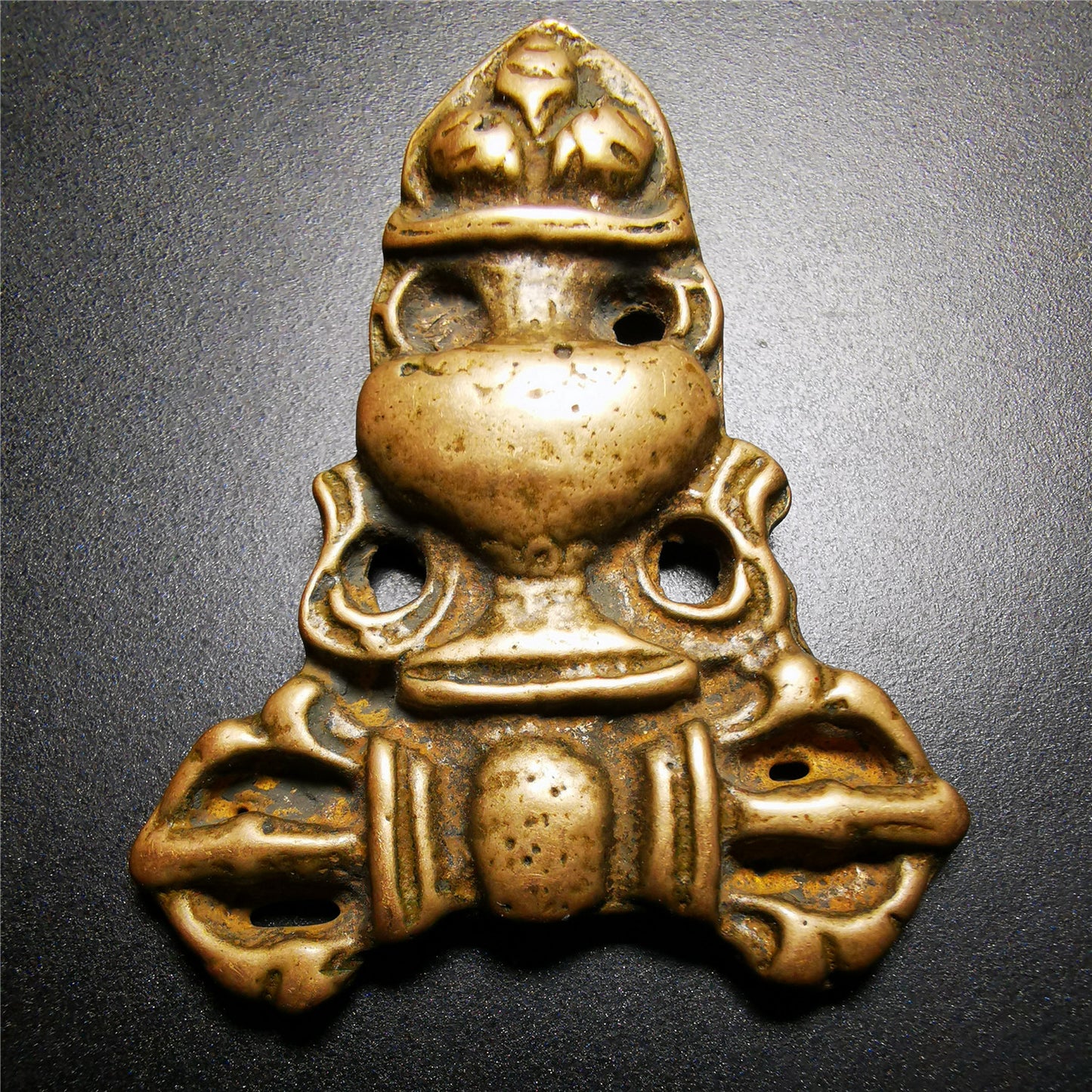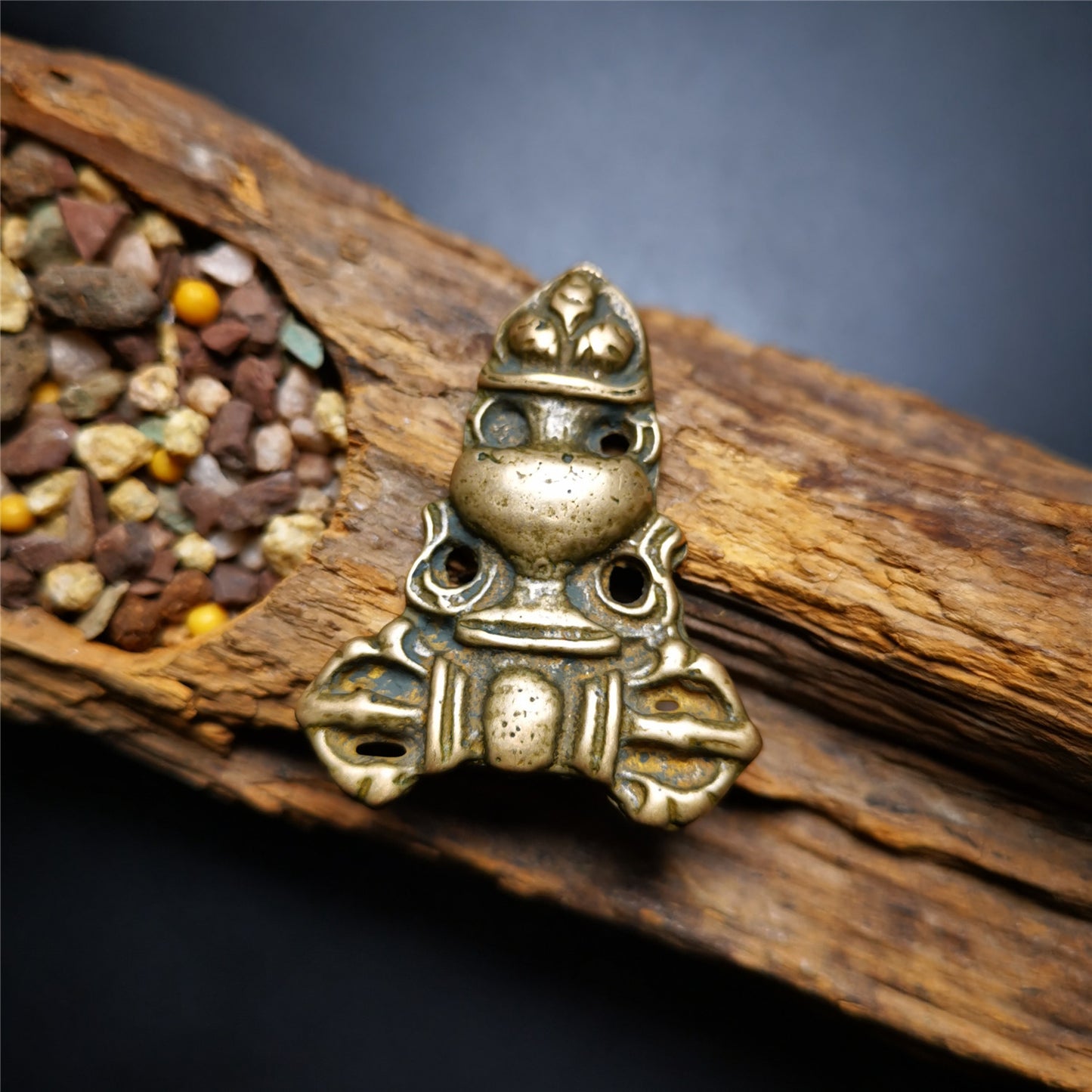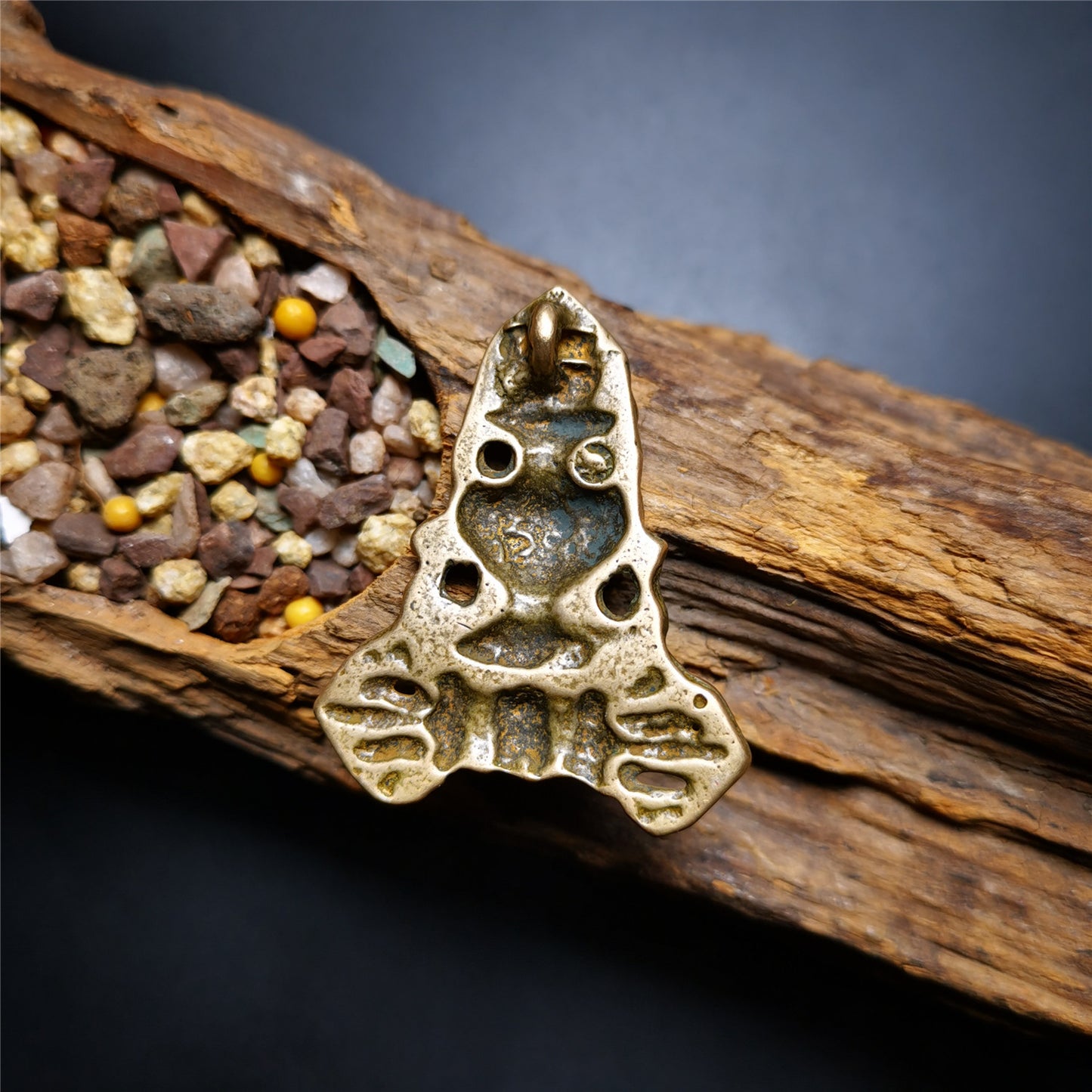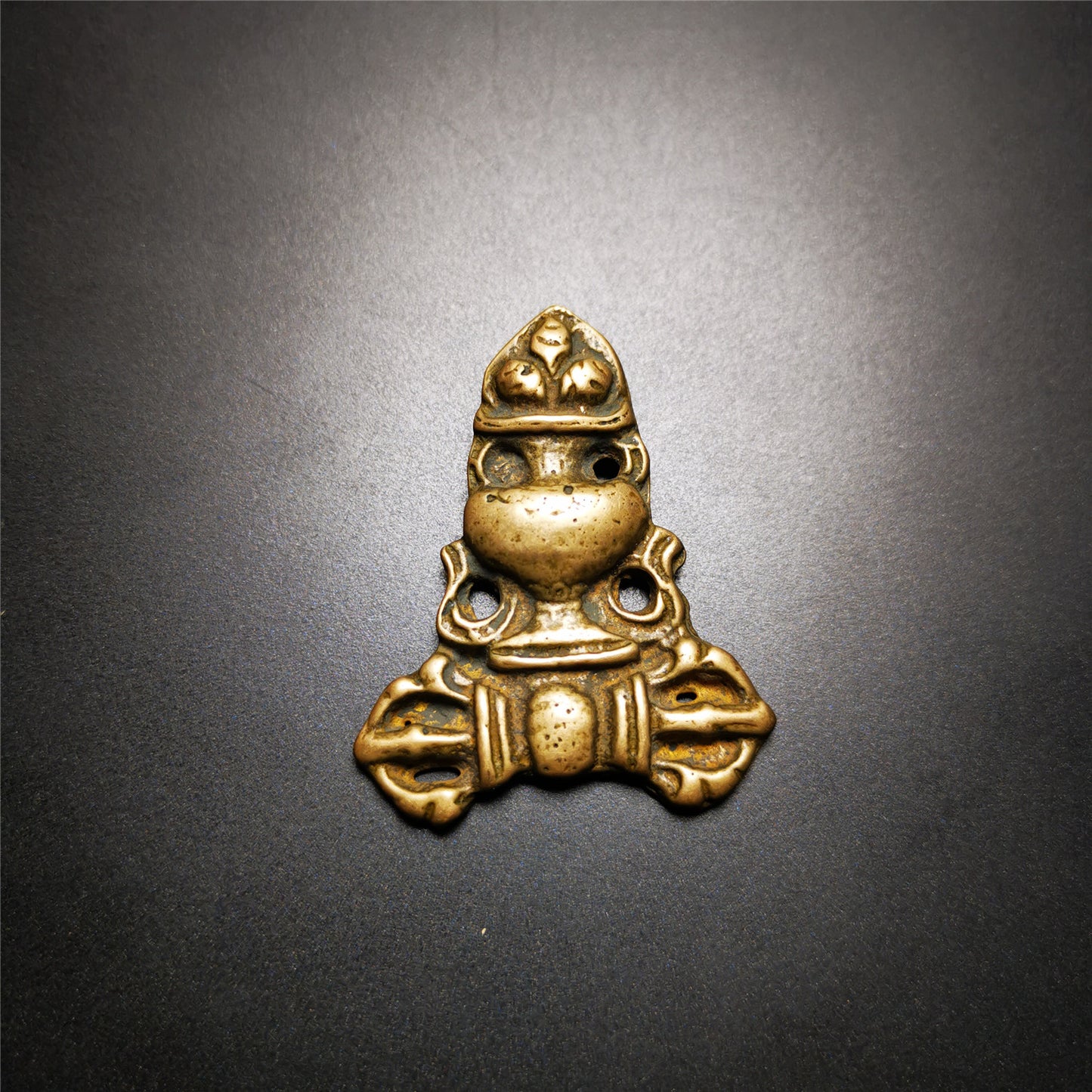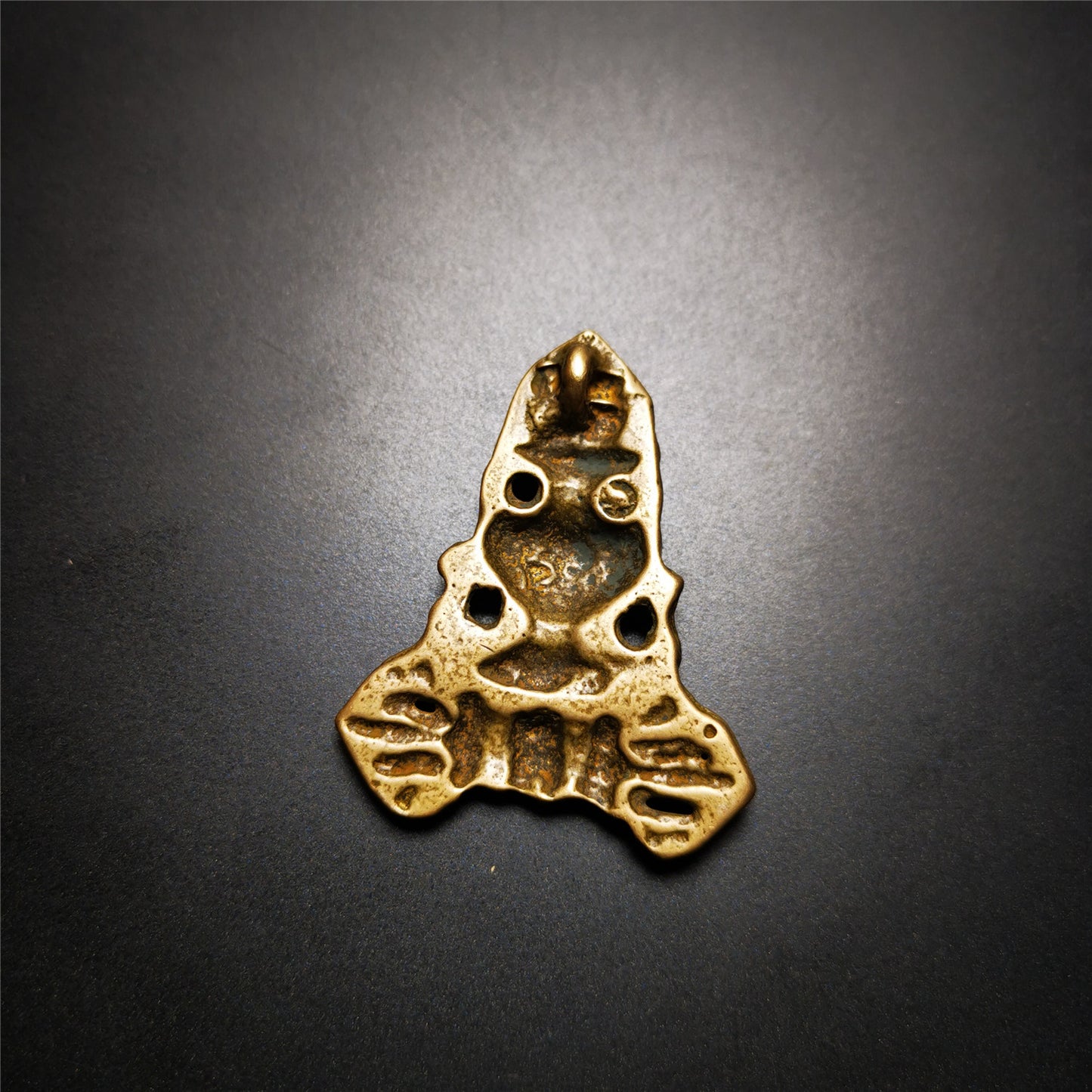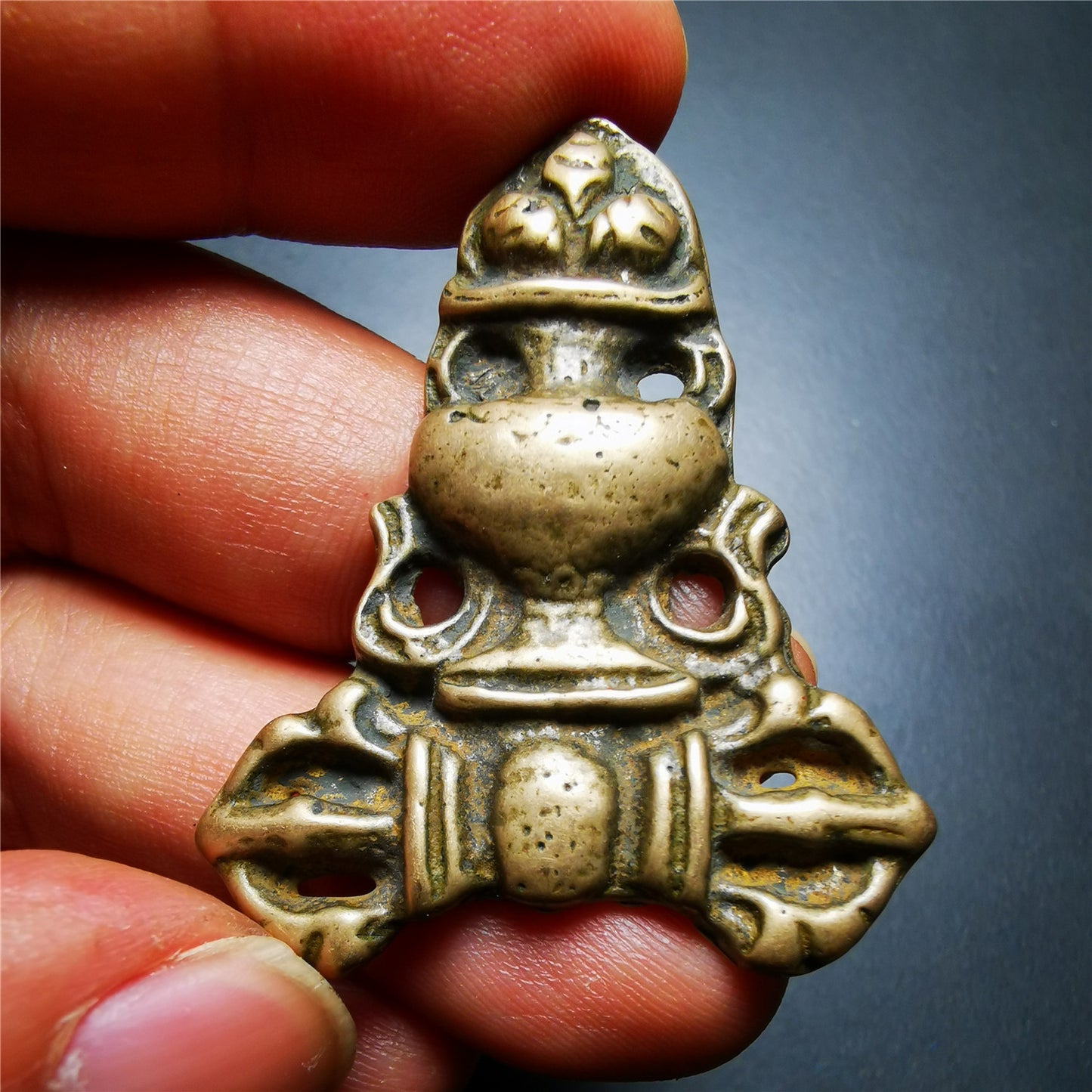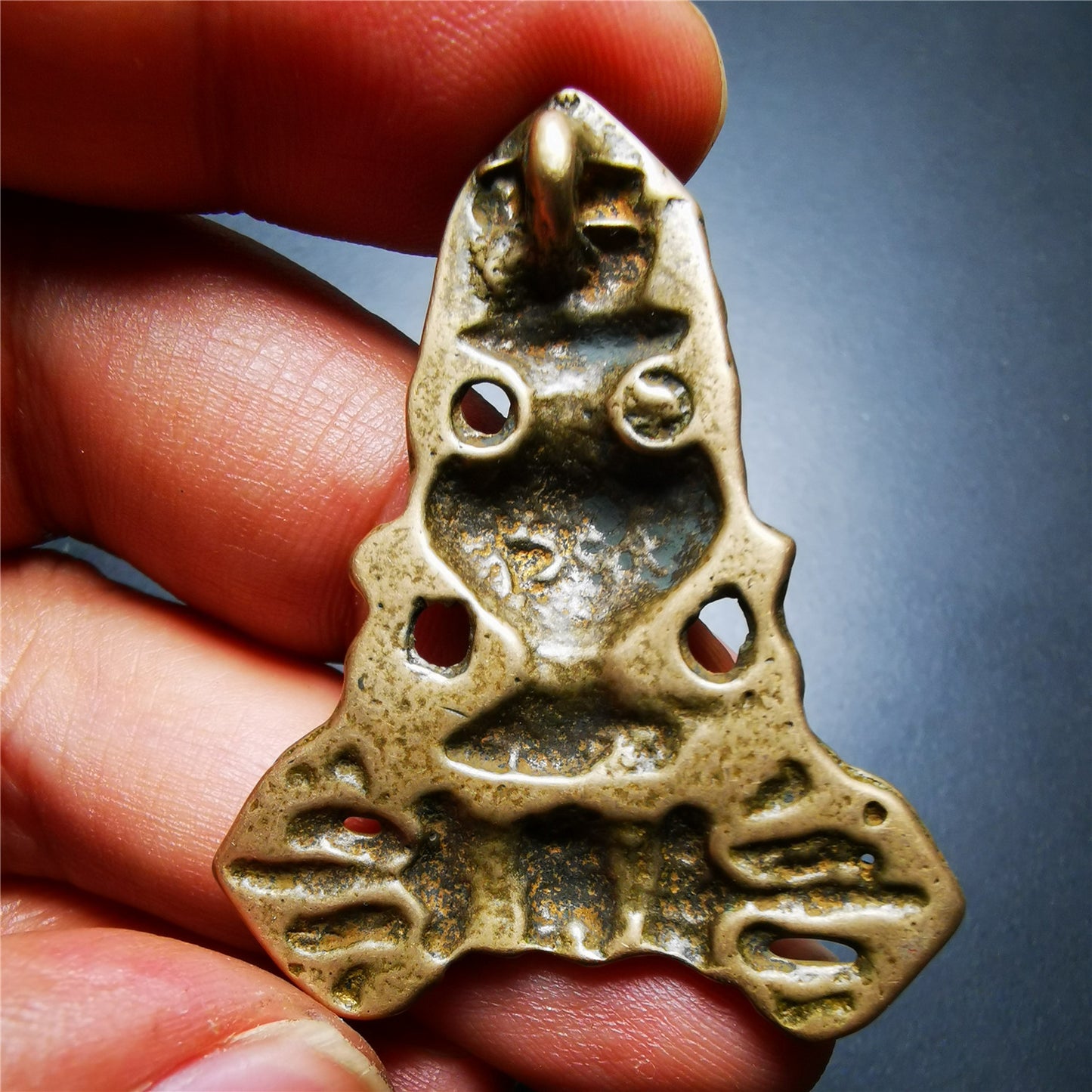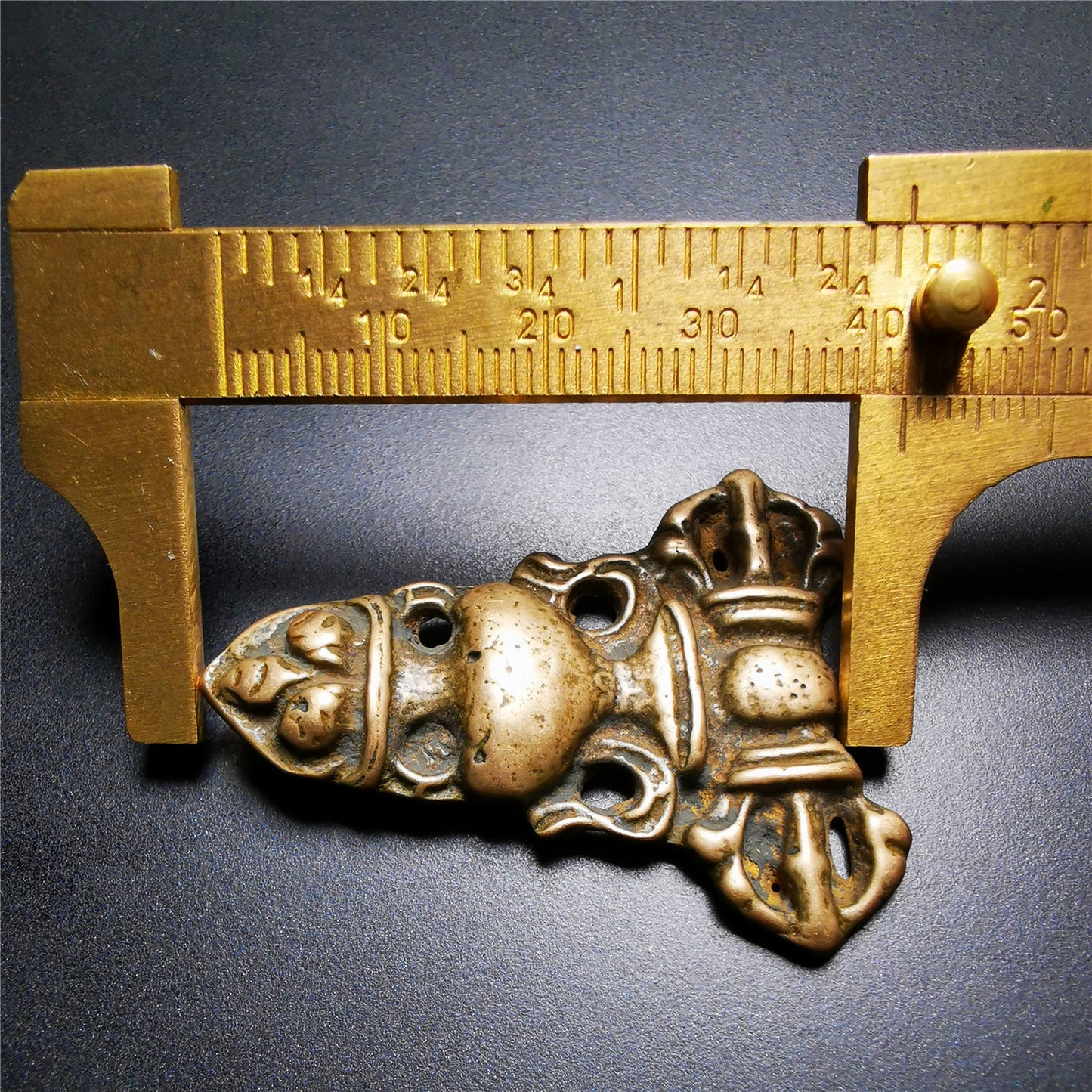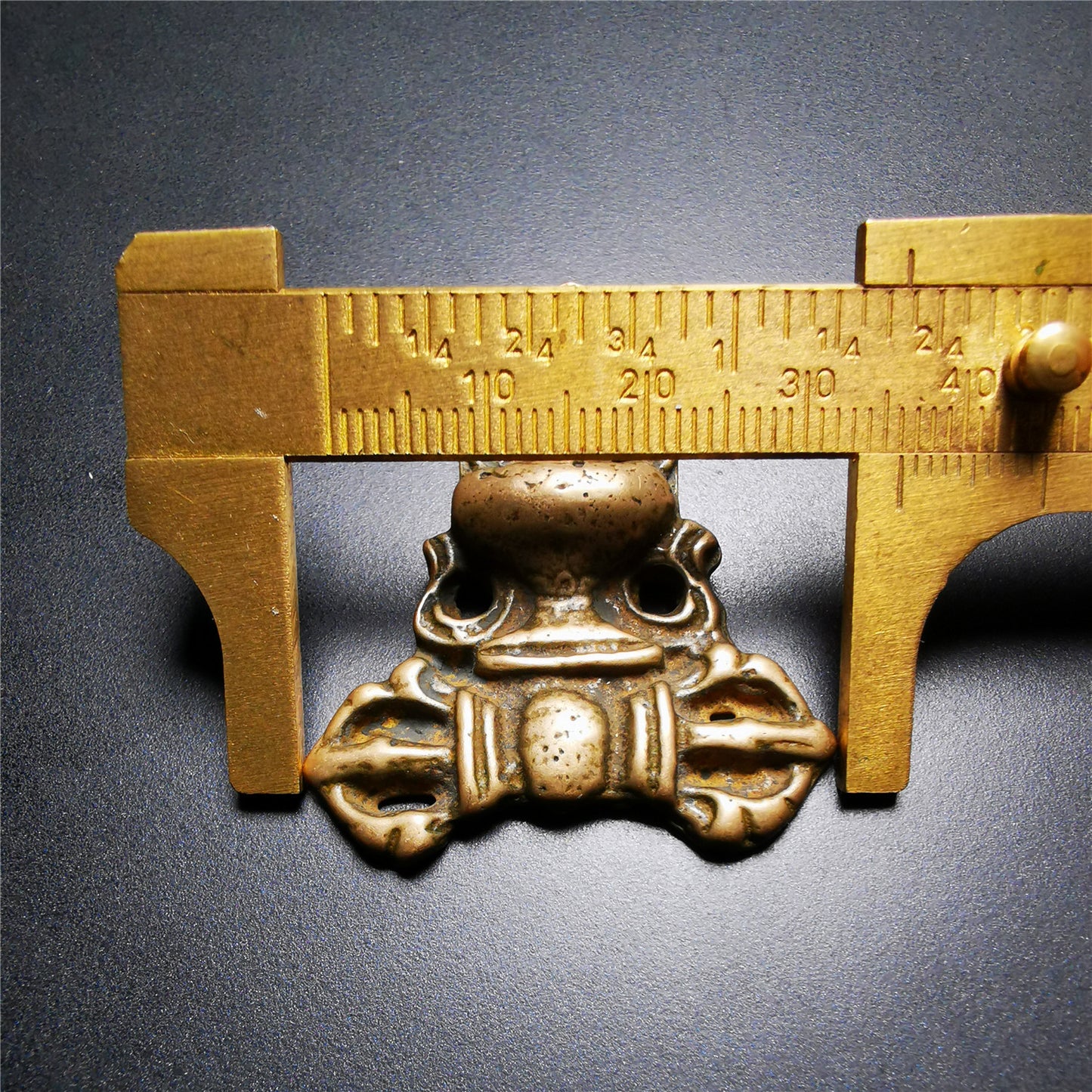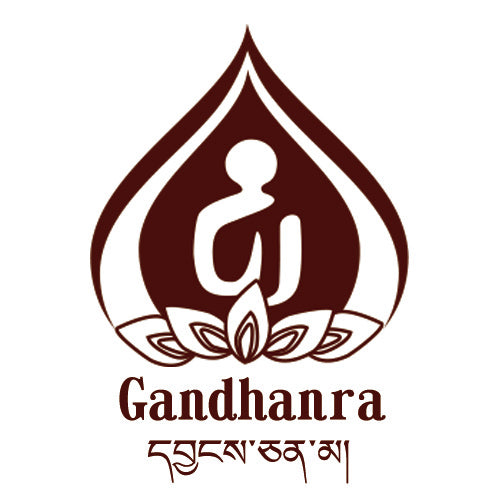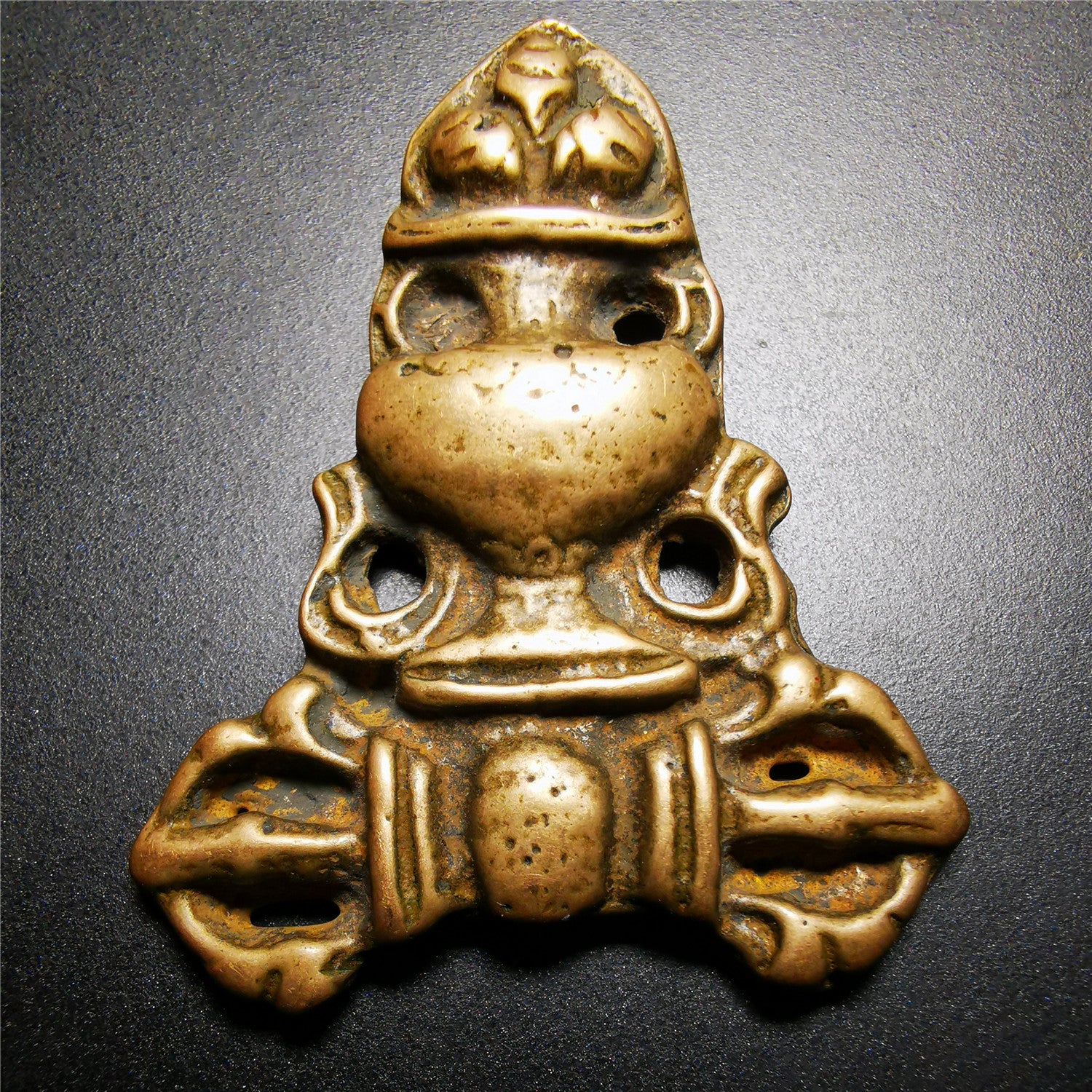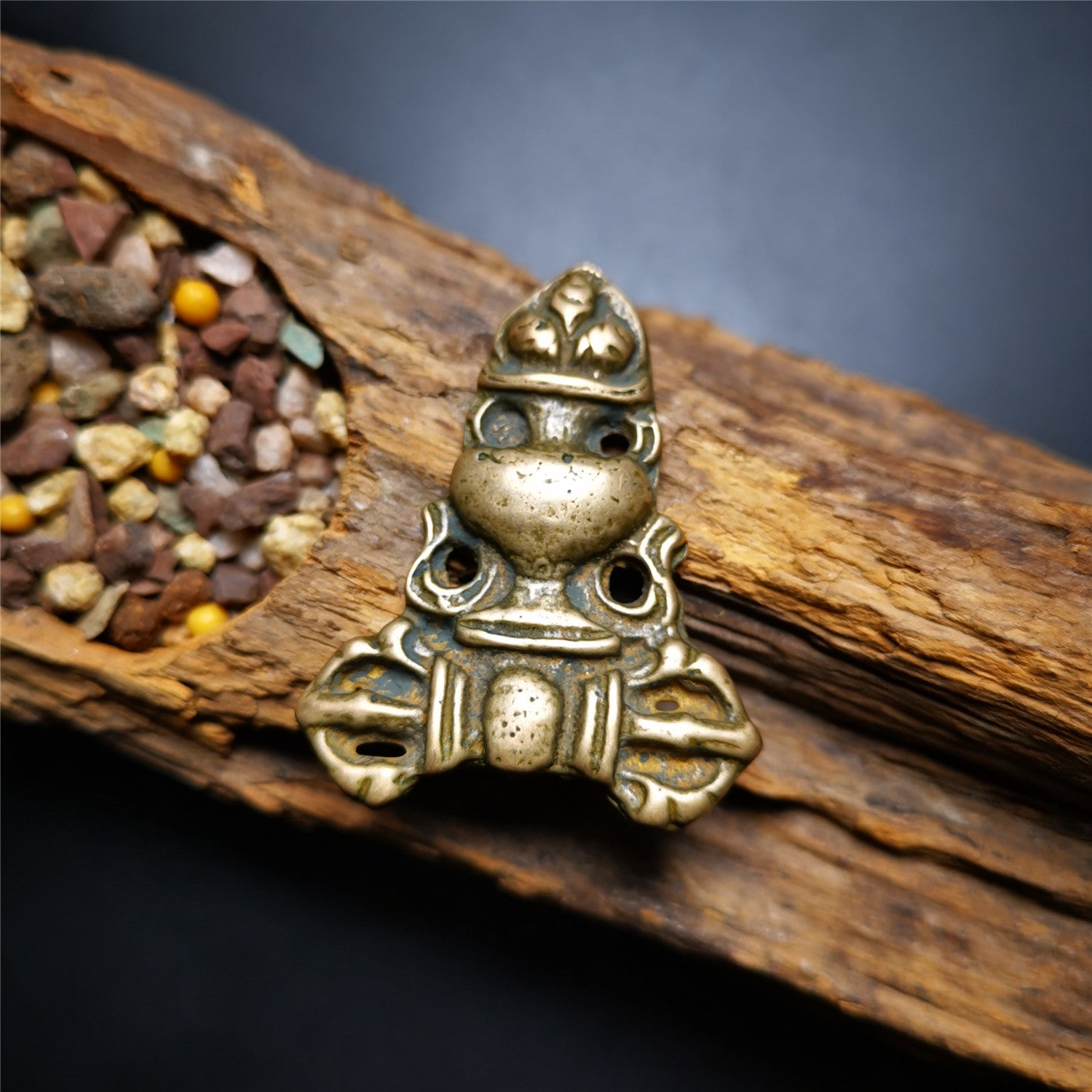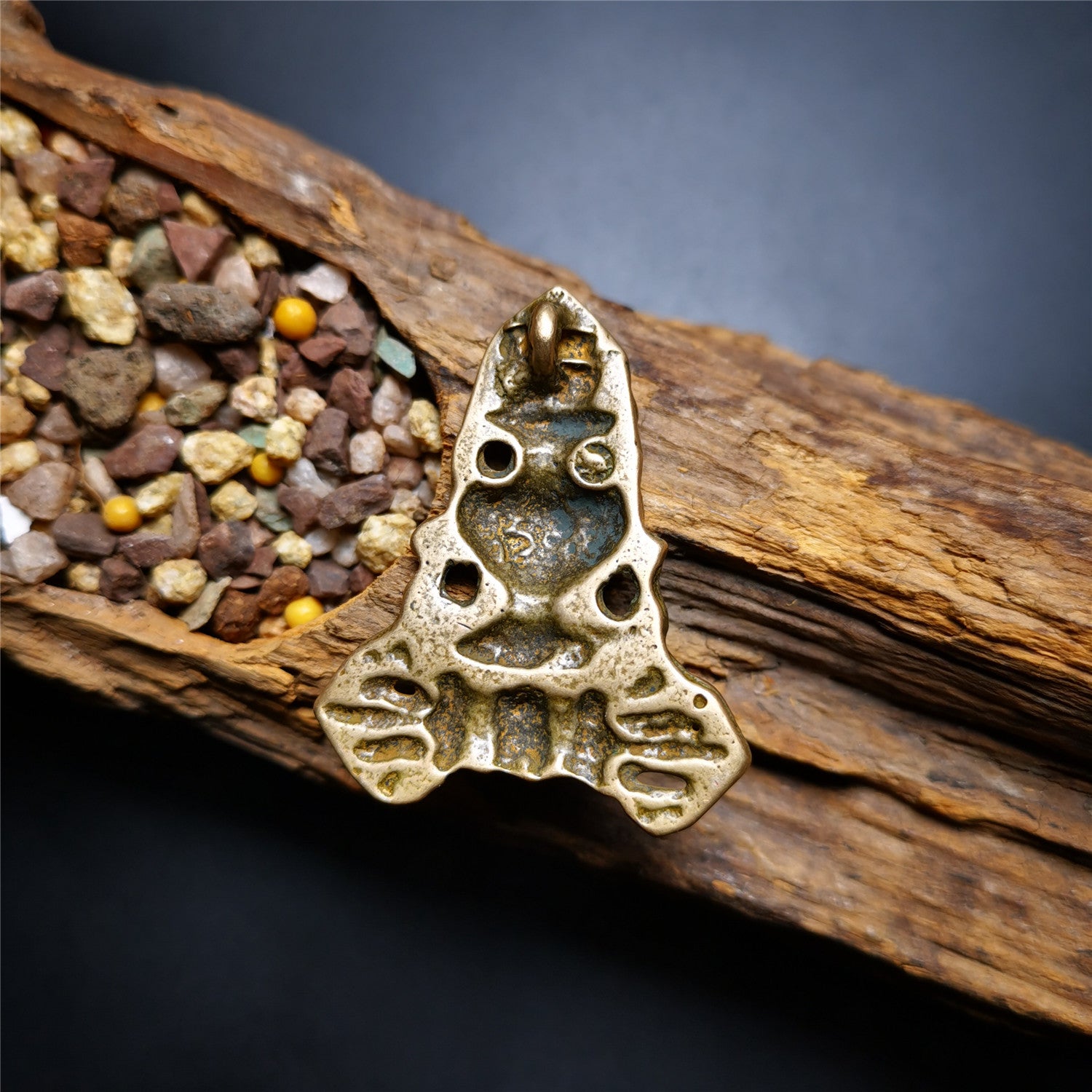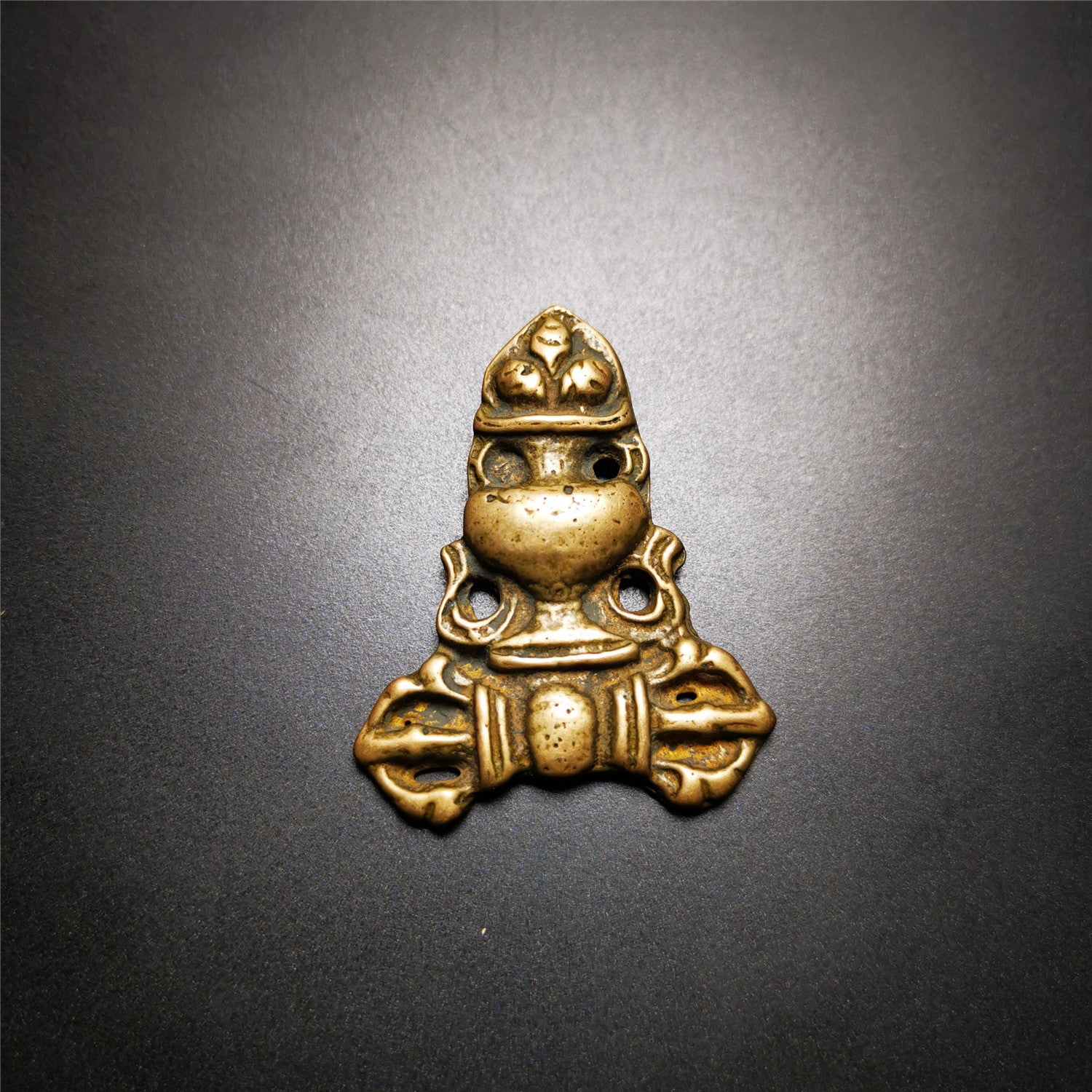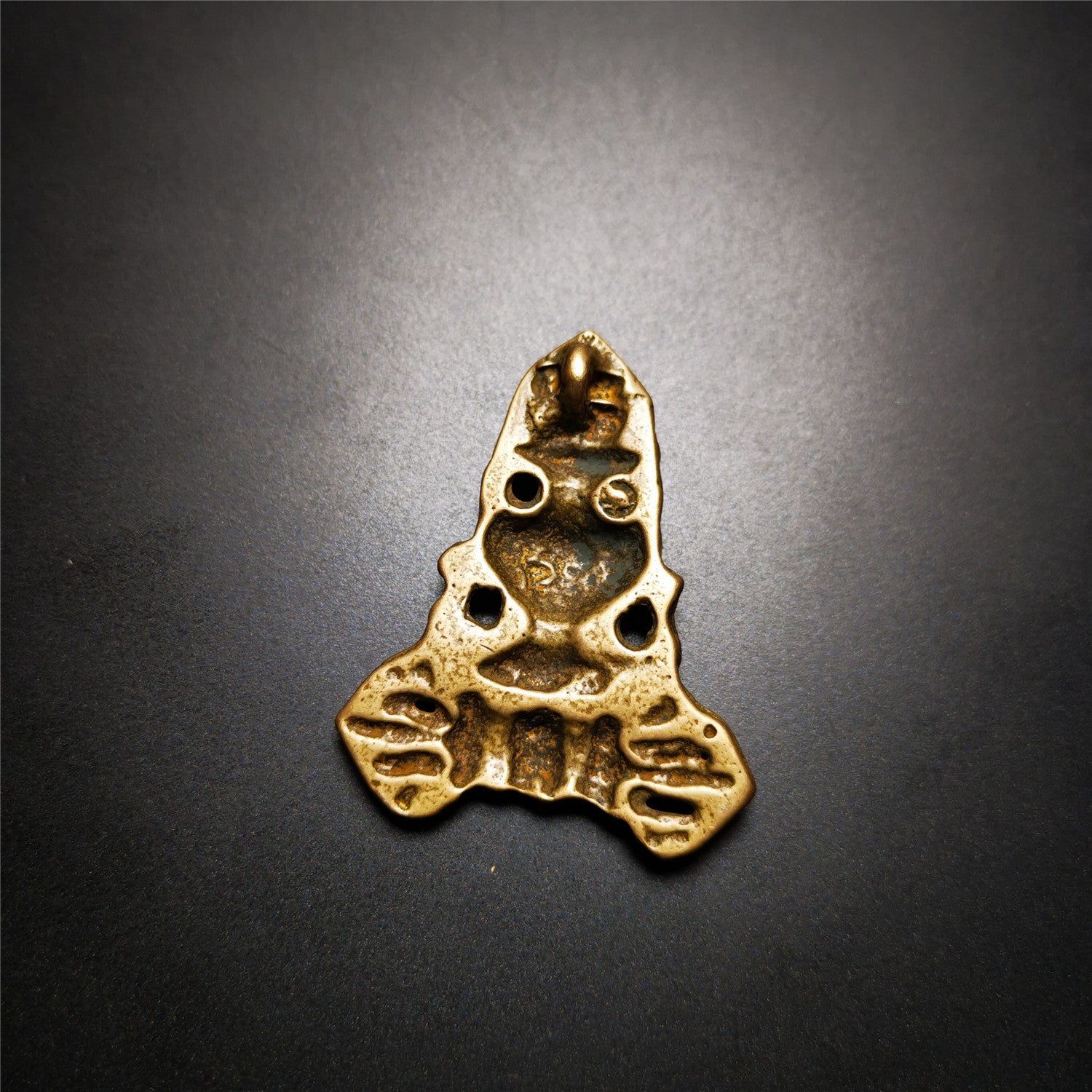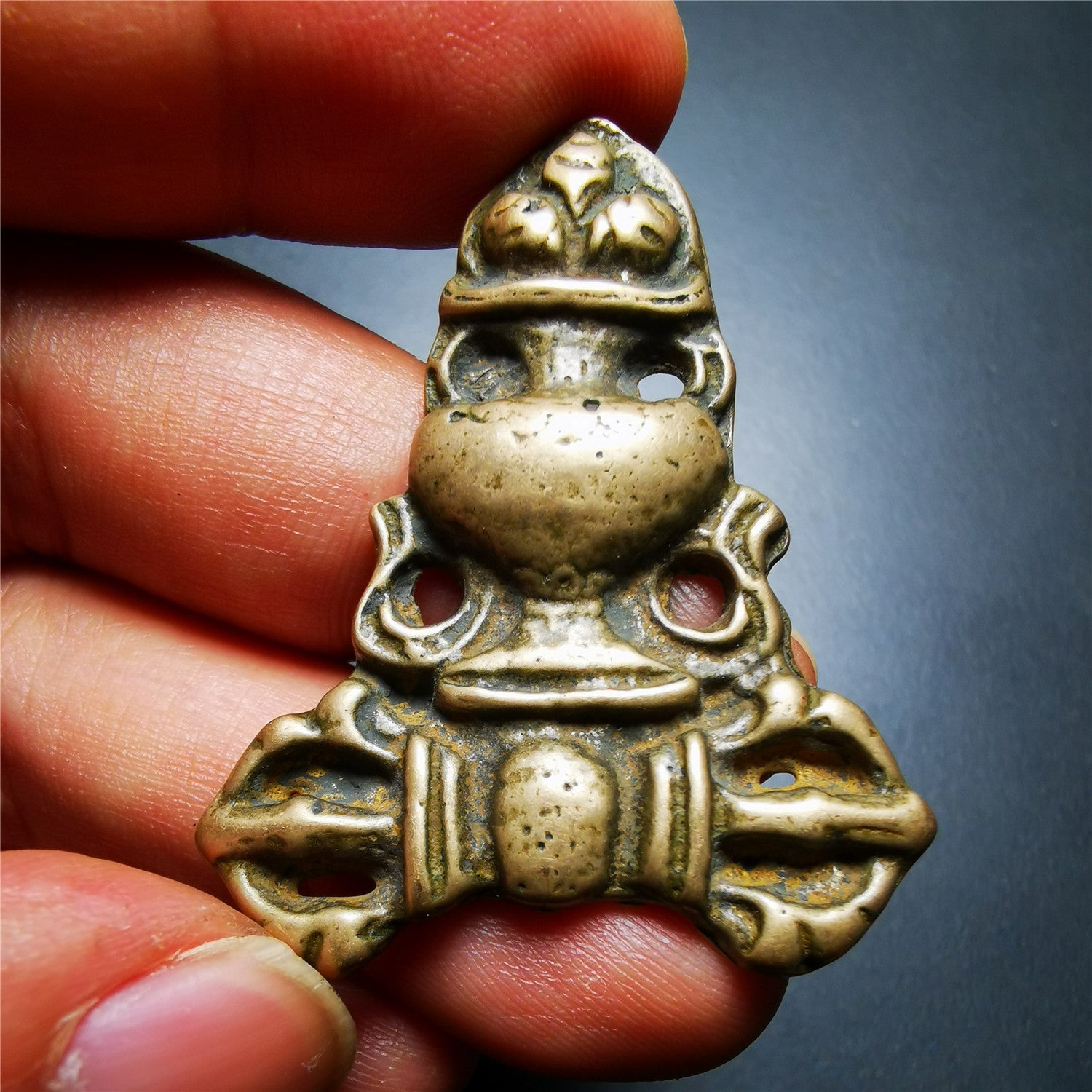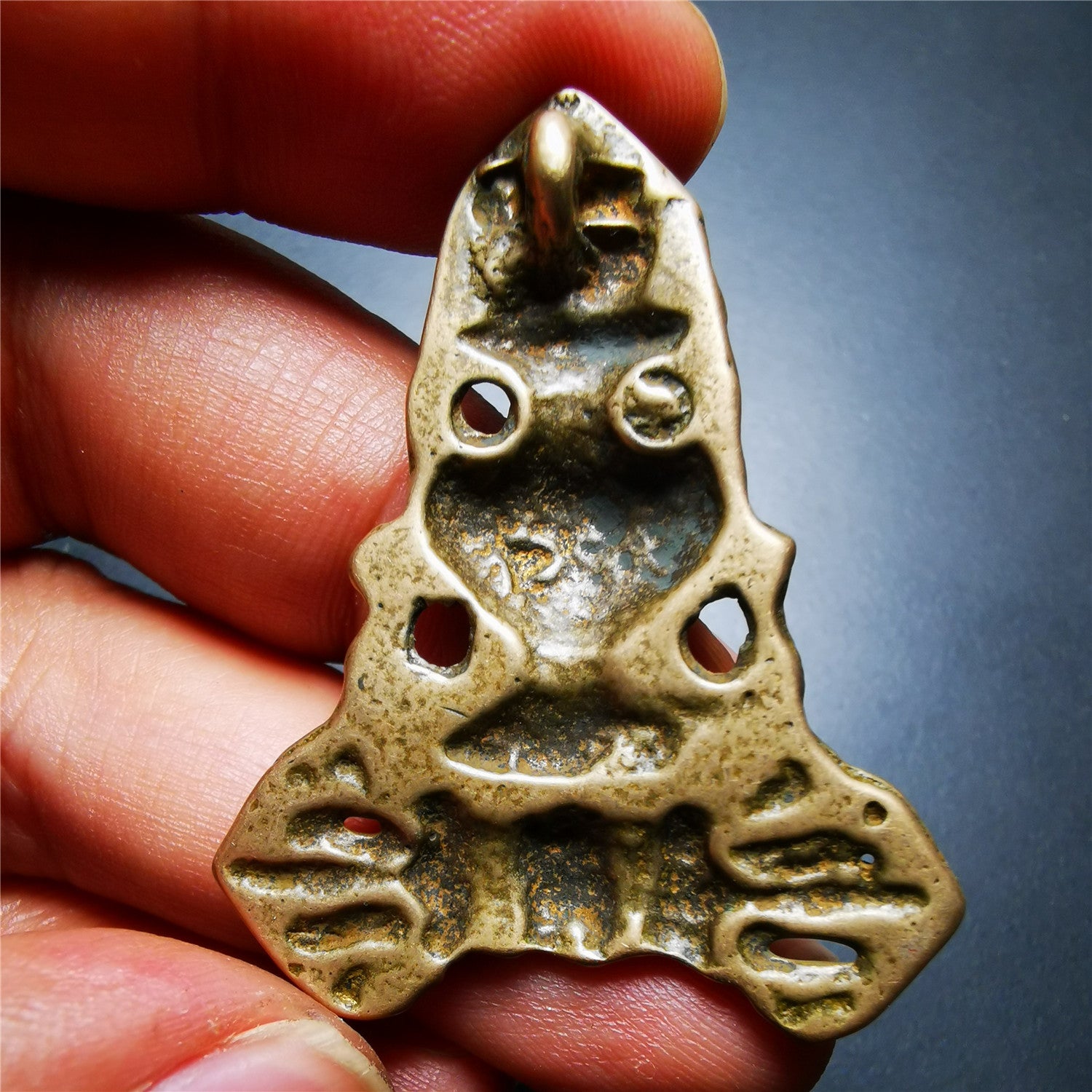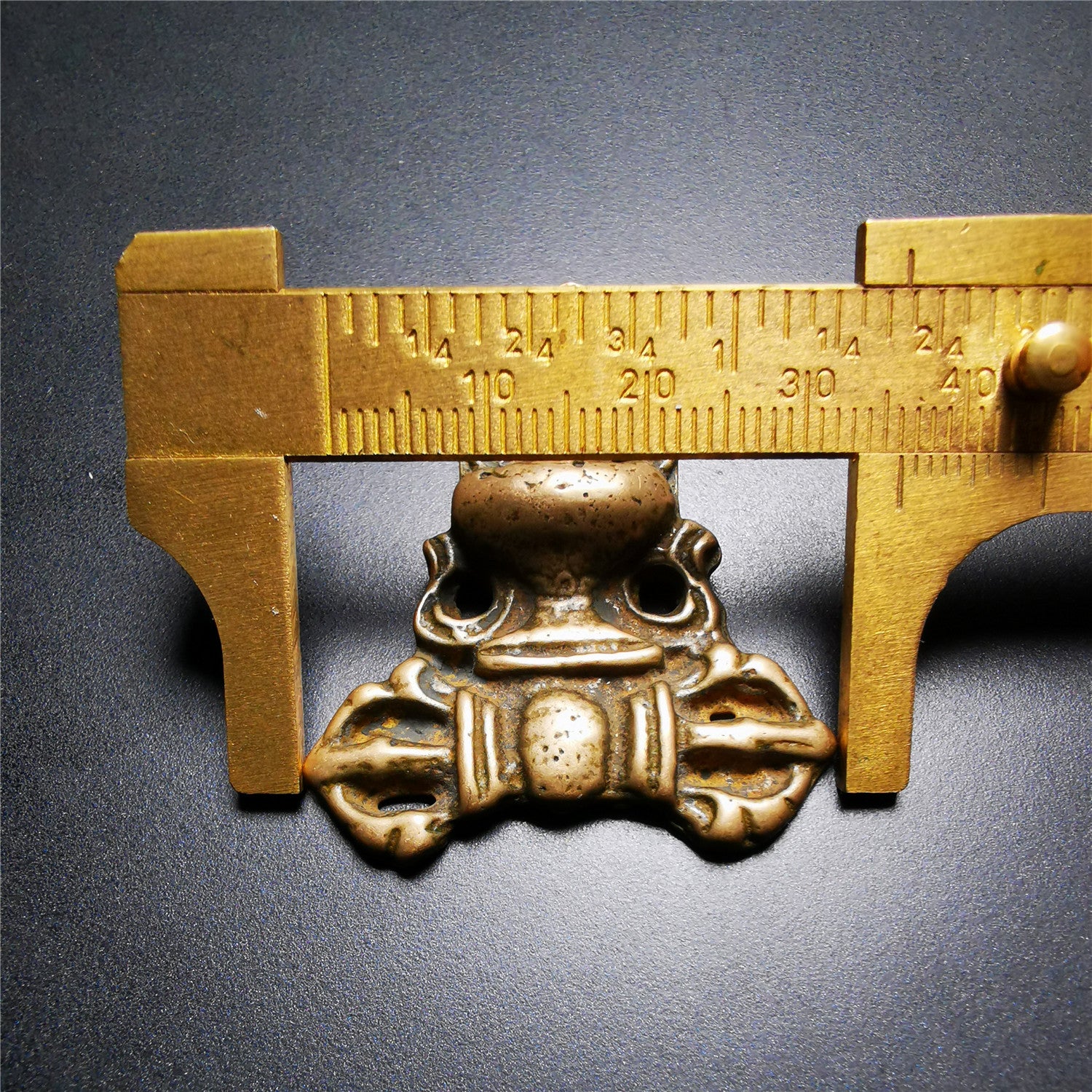Mani Jewel Cintamani Badge
Mani Jewel Cintamani Badge
⏱Vintage: 1940s
☞Handmade: 100%
⚒Materials: Lima Brass
☲Size: 1.65" × 1.4"
Couldn't load pickup availability
❤This is collect from Gengqing Monastery Tibet,it's an old badge or amulet pandent, made of brass, the shape is Triratna symbol,looks really cool and beautiful. When on a go or travelling, it's placed as a waist tag.
You can make it into a necklace, or a keychain, or just put it on your desk,as an ornament.
❤Details
100% Handmade
Pendant material:brass
Pattern: Triratna symbol
Length: 42mm /1.65 inches
Width: 36mm /1.41 inches
❤ABOUT WISH-FULFILLING CINTAMANI or MANI JEWEL
Cintāmaṇi (Sanskrit; Devanagari: चिंतामणि; Chinese: 如意寶珠; Pinyin: Rúyì bǎozhū; Romanji: Nyoihōju), also spelled as Chintamani (or the Chintamani Stone), is a wish-fulfilling jewel within both Hindu and Buddhist traditions, said by some to be the equivalent of the philosopher's stone in Western alchemy. It is one of several Mani Jewel images found in Buddhist scripture.
In Buddhism it is held by the Bodhisattvas (divine beings with great compassion, wisdom and power) Avalokiteshvara and Ksitigarbha. It is also seen carried upon the back of the Lung Ta (wind horse) which is depicted on Tibetan prayer flags. By reciting the Dharani (small hymn) of Cintamani, Buddhist tradition maintains that one attains the Wisdom of Buddha, able to understand the truth of the Buddha, and turn afflictions into Bodhi. It is said to allow one to see the Holy Retinue of Amitabha and assembly upon one's deathbed. In Tibetan Buddhist tradition the Chintamani is sometimes depicted as a luminous pearl and is in the possession of several of different forms of the Buddha.
Within Hinduism, it is connected with the gods, Vishnu and Ganesha. In Hindu tradition it is often depicted as a fabulous jewel in the possession of Vishnu as Kaustubha Mani or as on the forehead of the Naga king called as Naga Mani or on the forehead of the Makara. The Yoga Vasistha, originally written in the 10th century AD, contains a story about the cintamani.The Hindu Vishnu Purana speaks of the "Syamanta jewel, bestowing prosperity upon its owner, encapsulates the Yadu clan system".The Vishnu Purana is attributed to the mid-first millennium AD.
A maṇi-jewel; magical jewel, which manifests whatever one wishes for (Skt. maṇi, cintā-maṇi, cintāmaṇi-ratna). According to one's desires, treasures, clothing and food can be manifested, while sickness and suffering can be removed, water can be purified, etc. It is a metaphor for the teachings and virtues of the Buddha. ... Said to be obtained from the dragon-king of the sea, or the head of the great fish, Makara, or the relics of a Buddha.
A Mani Jewel (Chinese: 摩尼珠; pinyin: móní zhū; Japanese: mani ju) refers to any of various jewels mentioned in Buddhist literature as either metaphors for several concepts in Buddhist philosophy or as mythical relics, such as the wish-fulfilling cintamani as well as metaphorical devices to illustrate several ideas such as Buddha-nature and Śūnyatā.
